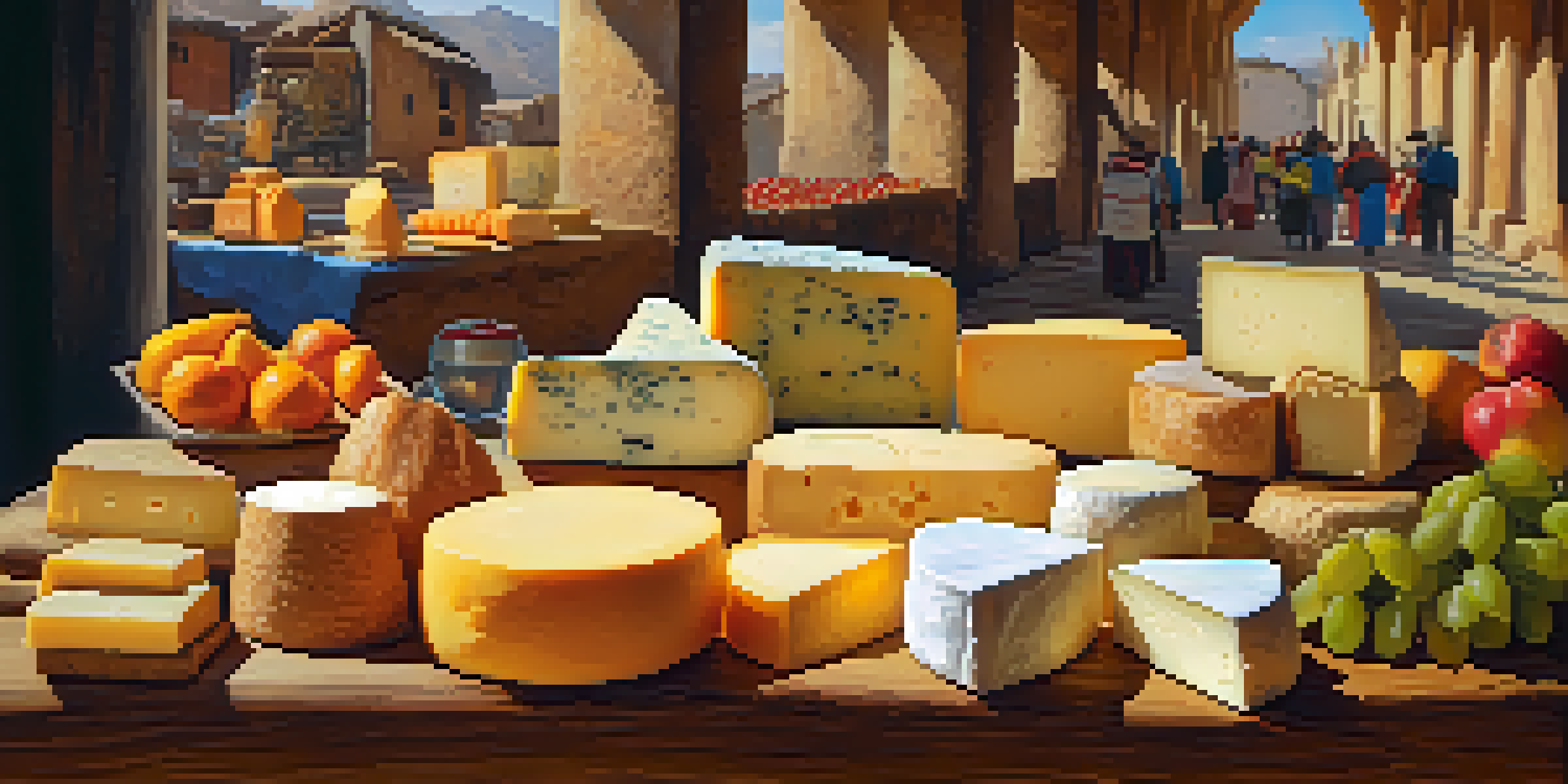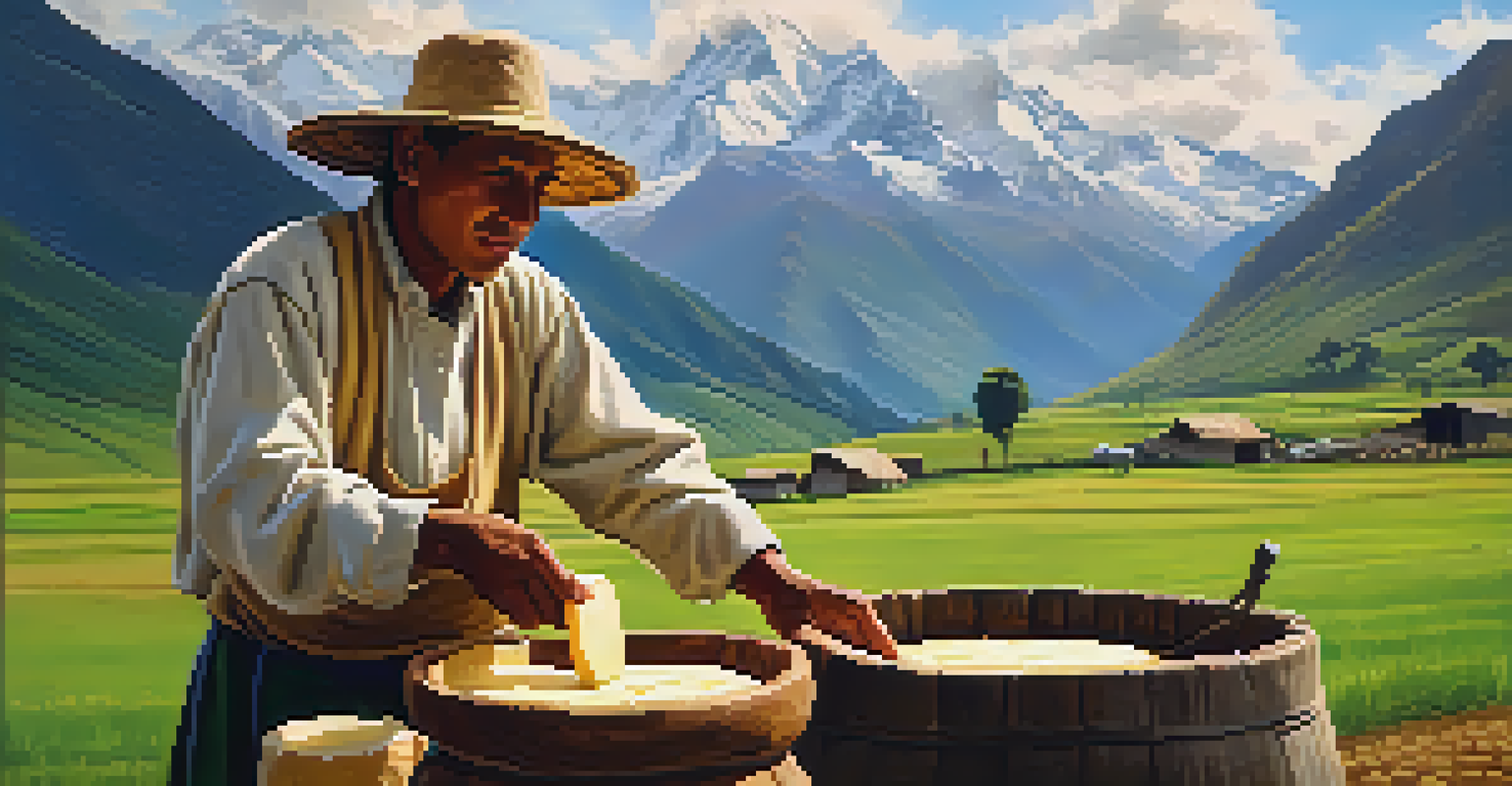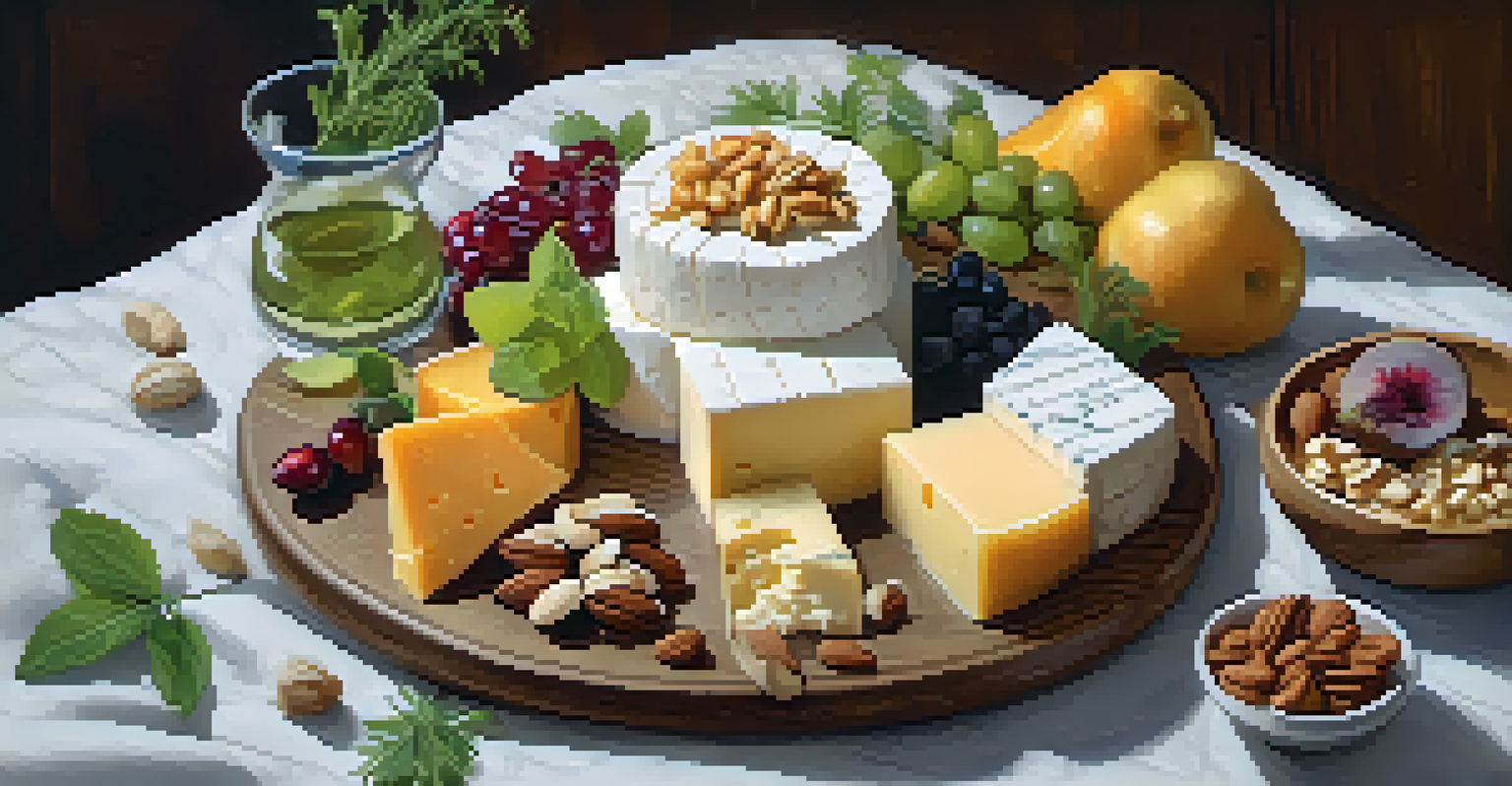Exploring Peru's Artisanal Cheese: A Taste of Tradition

The Rich History of Cheese Making in Peru
Cheese making in Peru is steeped in tradition, reflecting centuries of cultural influence. Indigenous communities, particularly in the Andean regions, have been crafting cheese using time-honored methods passed down through generations. These artisanal practices not only preserve the flavors of the land but also tell the story of Peru's diverse heritage.
Food is not just what you eat, it’s who you are.
The introduction of dairy farming by Spanish colonizers in the 16th century added new techniques and ingredients, enriching the local cheese landscape. Today, you'll find a delightful fusion of indigenous and European flavors, resulting in unique cheeses that are a testament to Peru's culinary evolution. Each cheese variety is a reflection of the local environment and farming practices.
As you explore the cheese varieties, you'll notice how geography plays a crucial role. From the high-altitude farms in the Andes, where cows graze on lush grasses, to the coastal regions where goats thrive, the diversity of Peru's landscape shapes the character of its cheeses.
Traditional Techniques and Local Ingredients
Artisanal cheese makers in Peru often rely on traditional methods that prioritize quality and authenticity. Many producers utilize raw milk from local farms, which not only enhances flavor but also supports sustainable farming practices. This connection to the land and its resources is what makes Peruvian cheese unique.

The process of cheese making often involves simple yet effective techniques, such as hand stirring and natural fermentation. These methods allow the cheese to develop complex flavors that reflect the local terroir. For example, some cheeses may carry hints of wild herbs or grasses that cows or goats have grazed on, creating a truly local taste.
Cheese: A Cultural Heritage in Peru
Peruvian cheese making combines indigenous traditions and European influences, creating a rich tapestry of flavors that reflect the country's diverse heritage.
Moreover, the use of traditional rennet and aging techniques adds depth to the flavors. Artisans may age their cheeses in caves or wooden barrels, allowing them to develop unique characteristics. This commitment to craftsmanship is a key reason why Peru's artisanal cheeses are gaining recognition on the global stage.
Exploring Different Varieties of Peruvian Cheese
When it comes to Peruvian cheese, variety is the spice of life! From the creamy Queso Fresco to the crumbly Queso Blanco, there's a cheese for every palate. Each variety has its own distinct texture and flavor profile, making them perfect for culinary experimentation or simply enjoying on their own.
Cheese is milk's leap toward immortality.
One standout is the aged Queso Poro, known for its robust flavor and firmer texture. It’s often enjoyed grated over traditional Peruvian dishes, adding a savory touch. Another favorite is the tangy Queso Helado, a fresh cheese often paired with fruits or used in desserts, showcasing the versatility of Peruvian dairy.
As you sample these cheeses, you'll also discover regional specialties. For instance, in the highlands, you might find Queso de Montaña, a cheese celebrated for its rich, nutty flavor, while coastal regions produce delicious seafood pairings, highlighting how cheese complements local cuisine.
The Role of Cheese in Peruvian Cuisine
Cheese is more than just a snack in Peru—it's an integral part of the culinary fabric. Many traditional dishes feature cheese as a key ingredient, enhancing flavors and textures. For example, the beloved dish of causa, a layered potato dish, often incorporates creamy Queso Fresco, elevating it to new heights.
In addition to being used in main dishes, cheese plays a role in appetizers and desserts. From cheese-stuffed empanadas to sweet cheese desserts like Queso Helado drizzled with honey, the versatility of Peruvian cheese is truly remarkable. It showcases the creativity of local chefs and home cooks alike.
Cheese: A Cultural Tradition
Cheese making in Peru reflects a rich history influenced by indigenous practices and Spanish colonization.
Moreover, cheese is often enjoyed in a social setting, bringing people together over shared meals. Whether it's at a family gathering or a local festival, cheese serves as a symbol of hospitality and community, making it a cherished part of the Peruvian experience.
Visiting Artisan Cheese Producers in Peru
If you're a cheese enthusiast, visiting artisanal cheese producers in Peru can be a delightful adventure. Many farms offer tours where you can witness the cheese-making process firsthand, from milking the animals to aging the cheese. This immersive experience allows you to appreciate the dedication and craftsmanship behind each wheel of cheese.
During these visits, you're likely to enjoy tastings, where you can sample various cheeses paired with local accompaniments like olives, breads, and wines. This not only enhances your tasting experience but also connects you to the local culture and flavors. Imagine savoring a slice of Queso Poro while overlooking the stunning Andes—it's an experience to cherish!
Additionally, supporting local cheese makers helps sustain traditional practices and promotes the preservation of unique culinary heritage. By purchasing artisanal cheeses, you're not just indulging in delicious flavors; you're also contributing to the livelihoods of those passionate about their craft.
Pairing Peruvian Cheese with Local Beverages
To elevate your cheese tasting experience, consider pairing Peruvian cheeses with local beverages. The country's rich beverage culture, from pisco to craft beers, offers a myriad of options that complement the flavors of artisanal cheeses. For instance, a refreshing glass of chicha morada, a traditional purple corn drink, pairs wonderfully with Queso Fresco.
For a more spirited pairing, try Queso de Montaña with a well-crafted pisco sour. The citrusy notes of the cocktail beautifully balance the rich, nutty flavors of the cheese. Similarly, craft beers brewed in Peru can enhance the tasting experience, with lighter ales complementing fresh cheeses and darker stouts pairing well with aged varieties.
Artisanal Techniques Shine
Local cheese makers prioritize traditional methods and local ingredients, resulting in unique flavors that celebrate Peru's diverse landscape.
Exploring these pairings not only enhances the flavors but also showcases the synergy between local produce and artisanal products. It opens up an exciting world of flavor combinations that reflect the essence of Peruvian gastronomy.
The Future of Artisanal Cheese in Peru
As global interest in artisanal foods continues to grow, the future of Peruvian cheese looks promising. Local producers are increasingly focusing on sustainable practices and quality over quantity, which resonates with consumers seeking authentic experiences. This shift not only preserves traditional methods but also enhances the reputation of Peruvian cheeses on the international stage.
Moreover, collaborations between chefs and cheese makers are paving the way for innovative culinary creations. By incorporating artisanal cheeses into modern dishes, chefs are helping to elevate these traditional products and introduce them to new audiences. This fusion of old and new is a vibrant part of Peru's culinary evolution.

With growing support from both locals and tourists, it's clear that artisanal cheese is more than just a trend—it's a movement. As you explore Peru's rich cheese landscape, you become part of a story that celebrates tradition, craftsmanship, and the joy of good food.